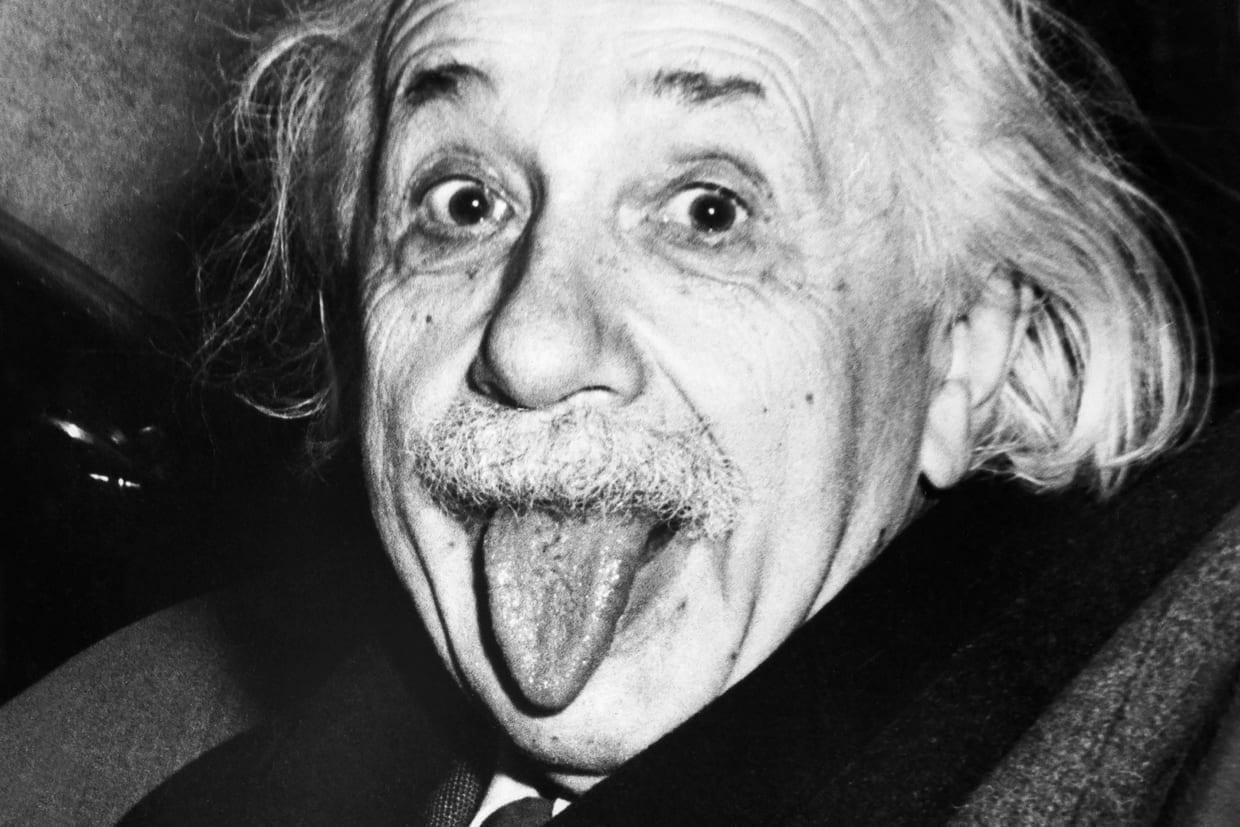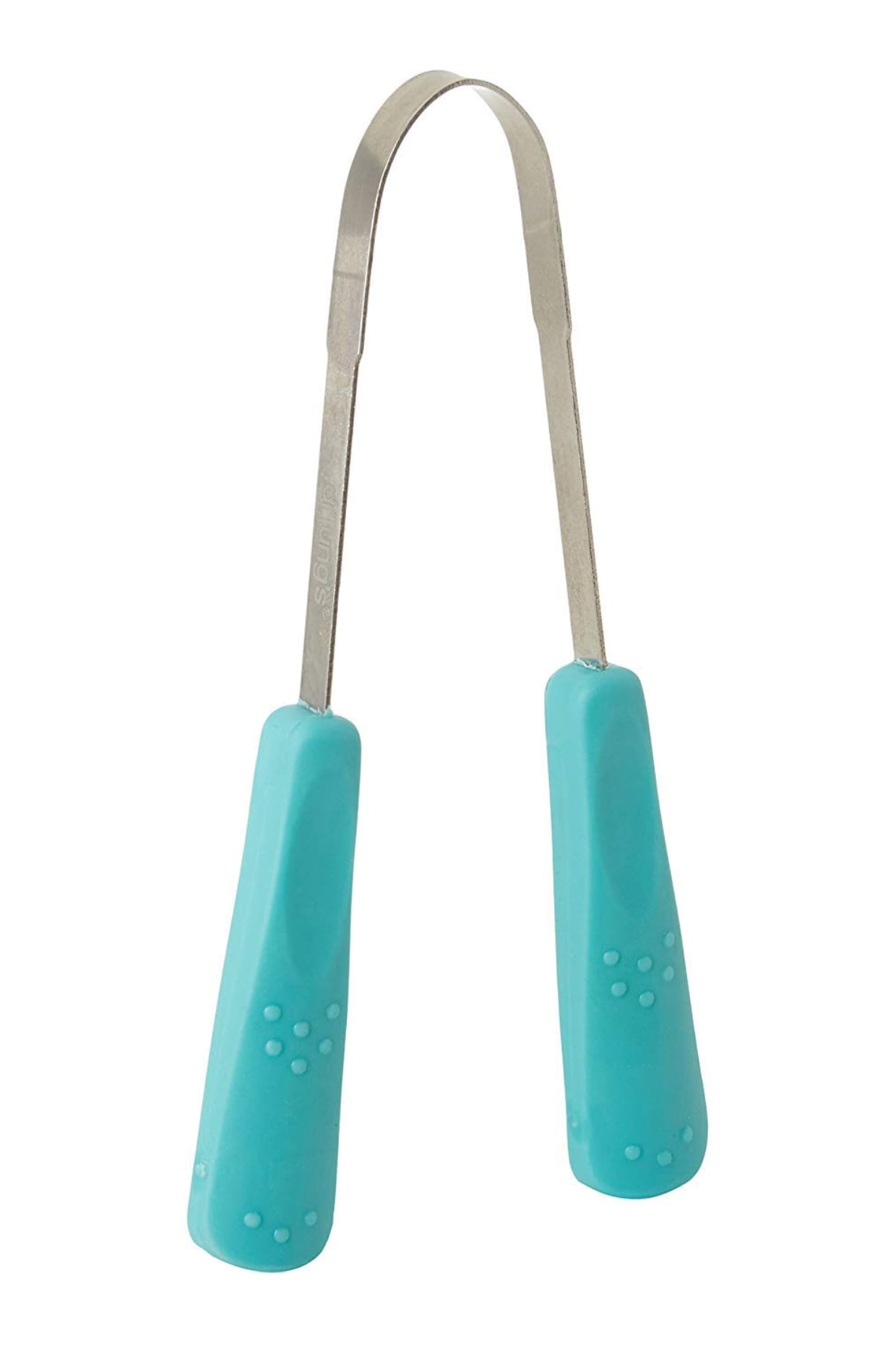You brush your teeth two times a day, you floss each night, schedule your biannual dental cleansing and maybe even pop in those Crest 3D Whitestrips on the regular. But you might still be missing a key step in your routine that could drastically improve your dental and overall health: tongue scraping.
Tongues are vital for talking — of course — and chewing, swallowing and tasting food. However, it is also covered in bacteria, which can show up as a white film that coats the top of your tongue and is caused by a mix of this bacteria, dead cells and food debris. An accumulation of this can lead to bad breath, tooth decay and gum infection. So cleaning your tongue is an important step in your oral health.
What is Tongue Scraping?
Tongue scraping is an Ayurvedic self-care ritual and oral hygiene practice that helps to remove bacteria that can cause any of those conditions, remove food, fungi toxins and more. The idea is that while we sleep, our bodies undergo a detoxification process that deposits these toxins onto our tongue. If we don’t scrape them away, they get reabsorbed by the body and can cause a myriad of oral health problems.
According to a study in RDH magazine, we have about 20 billion gram-positive or gram-negative bacteria in our mouth at any given time, which consists of about 1,000 known species. No one type of bacteria is better or worse than another on its own, but gram-negative anaerobic bacteria can have a bigger effect on bad breath because it forms sulfur byproducts that turn into bad breath and can live anywhere on your tongue and in plaque, according to the National Institutes of Health (NIH).
“The unfortunate side effect of having bacteria living in our mouths is that they multiply rapidly and, like all living organisms, excrete waste products from their cells called plaque,” says Neil McLeod, D.D.S., a cosmetic dentist in West Hollywood, California. “These waste products accumulate in our mouths and, unchecked, harm our bodies by producing a variety of reactions, tooth decay and gum disease.”
While you may wonder why simple tongue brushing doesn’t cut it, think of it this way, while brush and flossing help loosen the bacteria and debris, it only of moves it around and doesn’t actually remove it from your mouth. Plus, dental research has found that tongue scraping is way more effective at removing bacteria and toxins than simple tongue brushing.
How To Know If You Need It
“Some people will ask, ‘how do I know if my tongue needs scraping?’, well the short answer is it does,” says McLeod. “Take a teaspoon and scrape your tongue from the back to the tip and see what accumulates on the edge. That will soon change your mind about whether or not you need to do better.”
A healthy tongue will probably look uniformly pink, with no other yellow, whiteish or red discolorations; while an unhealthy tongue can look white or show white spots. These could be an indication of oral thrush, a yeast infection that develops inside the mouth; leukoplakia, where the cells of the mouth grow excessively; or even oral lichen planus, where a network of white lines is raised on your tongue. “The tongue should be pink and clean all the way to the ridge of large papillae at the very back,” says McLeod. “A clean tongue makes food taste better, breath smell sweeter, and greatly enhances intimacy.” After all, the buildup can cause your taste buds to become blocked, which can lead to false cravings and ultimately allow you to better enjoy food, activate saliva productions which aid in digestion and assimilation of food.
https://www.instagram.com/p/Bq0TF2QFv0i/
Which Tongue Scraper Should You Use?
Tongue scrapers are a long, thin and flat instrument bent in a “U” shape. Most drugstores sell a variety of them made out of plastic, stainless steel, or copper. Most health professionals advise to choose a stainless steel one because they are easier to clean, bacteria can’t grow on it, and they also last longer than plastic ones, which can get discolored and break more easily. In a pinch, the side of a metal spoon can work too.
How to Do it
After brushing and flossing, stand in front of the mirror, hold the two ends of the scraper in your hands, stick out your tongue and place the scraper as far back as you can. Then, scrape in one stroke exerting firm, but gentle, pressure. It shouldn’t cause pain or injury, so if it does, loosen up on the pressure a bit. After, rinse out the scraper and repeat 5-10 times or until the tongue is clean and free of white coating. “As with brushing your teeth and gums, they work only as well as you use them, so stick your tongue out, check it out and give it a good old [scraping] from front to back until you gag. You will get better with practice. Do it every night before you go to bed,” adds McLeod. Adopt this practice one day at a time, and you will be well on your way to a plaque-free, odorless, healthy mouth.
We only recommend products we’ve independently researched, tested, and loved. If you purchase a product found through our links, Sunday Edit may earn an affiliate commission.








